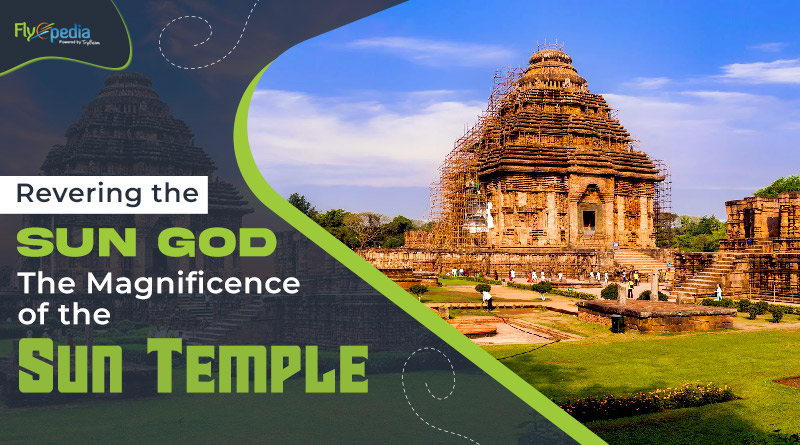Revering the Sun God- The Magnificence of the Sun Temple
Countless temples in India pay homage to Hindu gods like Shiva and Vishnu. But did you know that only a handful honour Surya, the sun god? Konark Sun Temple in Odisha is one such rare gem. Book cheap flight tickets to India from USA to visit this highly revered Sun Temple in Orissa. Choose Flyopedia for an additional discount on your trip to India.
Several myths and mysteries encircle this age-old temple. The temple has seen changes through time, including the distortion and reconstruction of cities, the rise and fall of kingdoms, and the erosion of identities. Fascinating mythology and folklore shroud the secrets of the Konark Sun Temple, some solved and others unresolved.
Some intriguing facts about this unique temple
Conception and Construction
Built-in the mid-13th century, most likely by the Odishan monarch Narashimhadev I to commemorate his military triumph over the Muslims, this enormous and incredibly magnificent temple is thought to be the cosmic chariot of the sun deity Surya.
Seven rearing horses (representing the days of the week) propel the stone leviathan on 24 stone cartwheels (representing the hours of the day). The temple was built such that dawn light would enlighten the deul (temple sanctuary) interior and the presiding god. You can book the best business class flights to India from USA on Flyopedia for a luxurious experience on your trip to Sun Temple.
Decline and Restoration
The temple was probably in use for only three centuries. The 40-meter-tall Sikhara (spire) partially fell in the late 16th century. There are several theories about why it happened, including raiding Mughals stealing the copper covering the roof, a ransacking Kalapahad that moved the Dadhinauti (arch stone), or just ordinary wear and tear from frequent storms. The presiding deity of Puri’s Jagannath Temple was relocated in the 17th century, and the temple’s interior was filled with stone by the British in 1903.
The temple has been undergoing continual and thorough renovation for years, and its progressive weathering continues today. Every year, workers replace disintegrating parts of beautiful wall panels with new blocks sculpted by modern hands, featuring uninspiring themes. As a result, the building gradually loses the artistic brilliance that originally made it so unique.
Architectural Features
The main gate, guarded by two stone lions crushing elephants, leads to the intricately detailed nritya mandapa. Steps flanked by straining horses lead to the still-standing jagamohan. Behind is the spireless deul, which features three spectacular chlorite representations of Surya placed to capture the sun in morning, noon, and dusk.
Symbolism and Sculptures
The temple’s chariot concept is reminiscent of a stylistic tendency in Indian architecture. This similarity is evident in the stone chariot at the Vittala Temple in Hampi and the Pancha Rathas complex in Mahabalipuram. Moreover, the latter contains five stone chariots dedicated to the Pandavas from the Mahabharata.
The base and walls provide a stone history of Kalinga life, with women cooking and men hunting. Many are in the sensual style for which Konark is prominent, featuring both single exhibitionists and intertwined couples. Also, when it comes to booking your flight tickets to India from Canada, visit Flyopedia.ca for affordable deals.
Guided Tours
Persistent guides will approach you at the entry for ₹150. The interpreters’ descriptions of the temple’s history, which combines religious and secular images with fact and legend, can provoke thoughtful contemplation. Make sure to choose a licensed guide who wears an official ID and is easily identifiable by the government. Additionally, check out last minute flight deals to India from USA if you make up your mind to travel and explore this revered temple in Orissa.
Also Read: Tirupati Temple: Tracing its Roots, Travel Tips and Nearby Attractions




